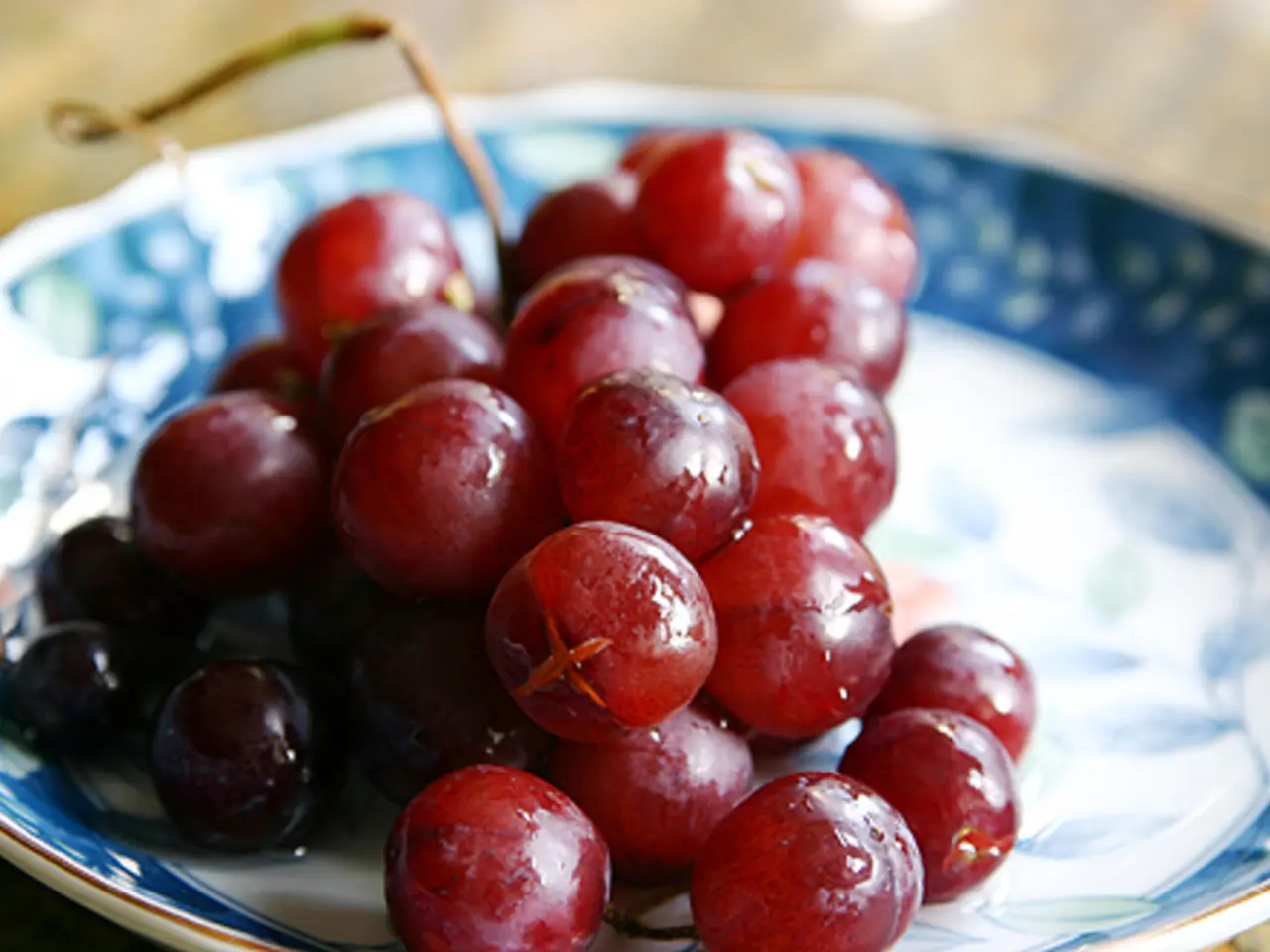Fungal Infection Affecting Cherry Leaves, Named as Cherry Leaf Spot
In the world of cherry cultivation, one persistent challenge is the cherry leaf spot disease. To effectively manage this fungal affliction, a combination of preventive and reactive strategies is essential. These strategies encompass cultural practices and fungicide applications, suitable for both backyard and commercial growers.
Preventive Measures
A healthy tree is less susceptible to fungal diseases, and maintaining tree health is a crucial preventive measure. Regular watering and proper fertilization are key to ensuring tree health[1]. Additionally, removing and destroying infected leaves in the fall helps reduce overwintering fungal spores and prevent reinfection in the next growing season. Pruning to improve air circulation within the canopy also aids in reducing fungal infection risk, as leaves that dry faster are less likely to become infected[1]. Sanitation is another important aspect, involving the clean-up of fallen leaves and debris around the tree to minimize sources of inoculum[1].
Fungicide Recommendations
Fungicides play a vital role in disease management, particularly in commercial settings. Application should begin at bud break or just before symptoms appear, often during late spring to early summer when purple spots begin forming. Recommended fungicides, labelled for cherry leaf spot disease, include those containing chlorothalonil, copper-based compounds, or synthetic fungicides effective against fungal leaf spots[1]. Regular fungicide sprays may be necessary during rainy periods to prevent the spread of conidia by splash dispersal[1]. It's essential to follow label instructions carefully regarding timing, frequency, and safety precautions.
Cultural Practices
Planting resistant or less susceptible cherry varieties, if available, is an effective long-term preventive measure. Avoiding overhead irrigation to minimize leaf wetness is another important practice. Keeping the area around trees free of weeds and debris promotes airflow, reducing the risk of infection[1]. For commercial growers, implementing an integrated pest management plan, including regular disease scouting and timely fungicide applications, is recommended. Consistent sanitation and health maintenance can significantly reduce disease pressure for backyard growers[1].
In conclusion, an integrated approach that combines sanitation, tree health maintenance, pruning, and timely fungicide applications is necessary to effectively control cherry leaf spot disease in both backyard and commercial settings[1]. It's important to note that conidia are spread to other leaves by splashing raindrops and are capable of causing new infections. Serious leaf spot damage usually occurs in years with numerous rainy periods throughout late spring and summer.
For the most recent fungicide recommendations, commercial growers should refer to Bulletin 506, Midwest Fruit Pest Management Guide, and backyard growers should refer to Bulletin 780, Controlling Diseases and Insects in Home Fruit Plantings. Collecting and destroying fallen cherry leaves in late autumn can help control the disease.
The fungus responsible for cherry leaf spot is named Blumeriella jaapii (previously known as Coccomyces hiemalis). Proper planting site selection, with direct sunlight, good air circulation, and soil drainage, can reduce the risk of infection. These publications can be obtained from county Extension offices or the CFAES Publications online bookstore. Fungicide sprays are primarily used to control the disease in commercial plantings. In early spring, fungal fruiting bodies called apothecia develop in the leaves. Once lesions have developed, masses of secondary or summer spores (conidia) are formed from the slightly concave eruptions (acervuli) on the underside of the leaf. Cherry leaf spot fungus overwinters in dead leaves on the ground. The ascospores stick to the leaf surface, germinate in a film of water, and penetrate the leaf through stomata on the underside.
This fact sheet was originally published in 2008. For more information and updates, it is advisable to consult the latest resources available.
- Incorporating home-and-garden practices such as planting resistant cherry varietals, avoiding overhead irrigation, maintaining the area around trees free of weeds and debris, and collecting and destroying fallen cherry leaves in late autumn can help reduce the risk of cherry leaf spot disease.
- Proper soil conditions, with good drainage and direct sunlight, can play a significant role in reducing the risk of cherry leaf spot disease, making them essential considerations for gardeners.
- Pest management strategies for cherry leaf spot disease don't only include fungicides, but also cultural practices like pruning, improving air circulation, and sanitation, along with lifestyle choices such as proper watering and fertilization that promote overall tree health.




